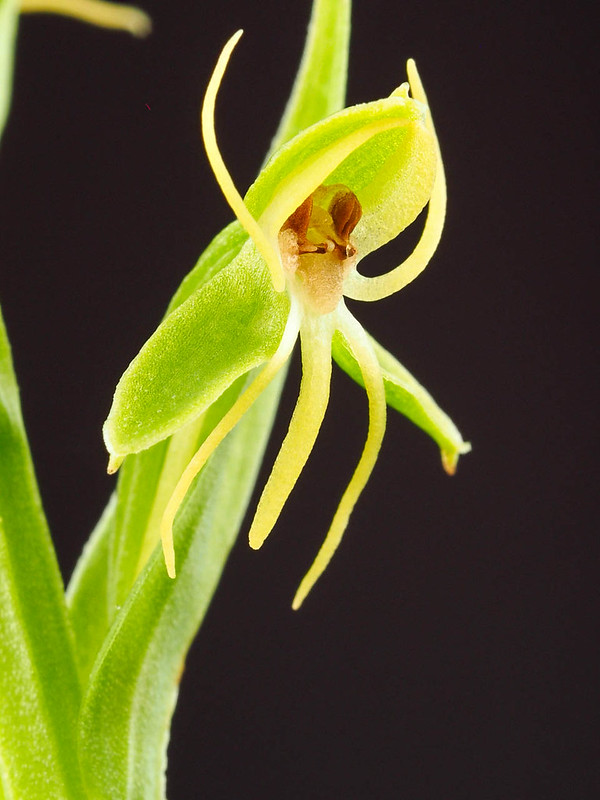
Habenaria repens is a widely distributed species, from the Southeastern United States, Central America, the Carribean and the majority of South America (link to a distribution map, some of these are not within the native range). Within the US, it occurs in the coastal states from North Carolina to Texas (link to the occurrence map).
This species grows in moist area, and it can grow as a semi-aquatic plants, growing on floating mats on ponds (Hunt 1943). As an interesting side note, a phenolic compound, called habenariol, has been extracted from this species and its antioxidant activity has been reported (Johnson et al. 1999). It turned out that this compound is a feeding deterrent against the freshwater omnivorous crayfish, Procambarus clarkii. It is interesting that people used to think that herbivory wouldn't be a big problem for aquatic plants, but this example shows that this orchid has evolved the counter-measure against herbivory.
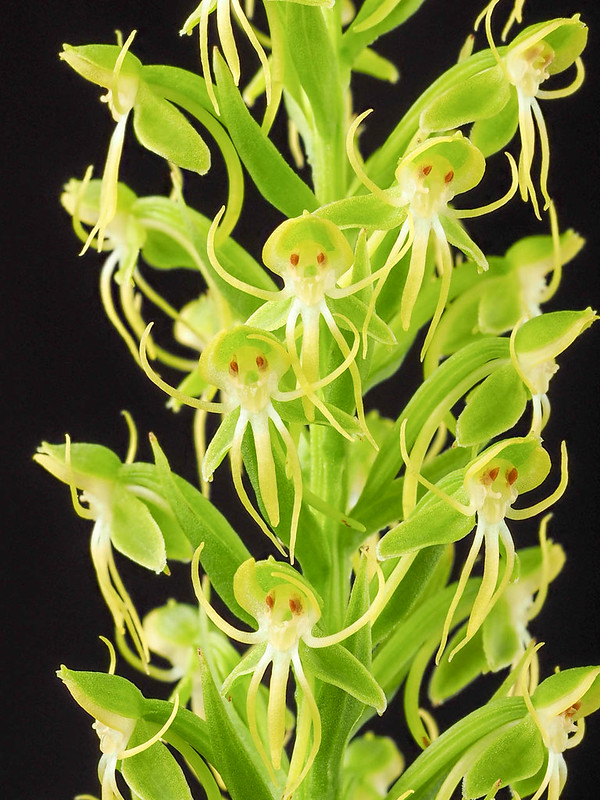
From a distance, the relatively small and green flowers aren't too obvious. But as with many other Habenaria, the close examination of the flower shows the fascinating shape. It looks like an alien creature, with the two reddish brown pollinia representing eyes. The color of the pollina seems to become darker with age of the flower.
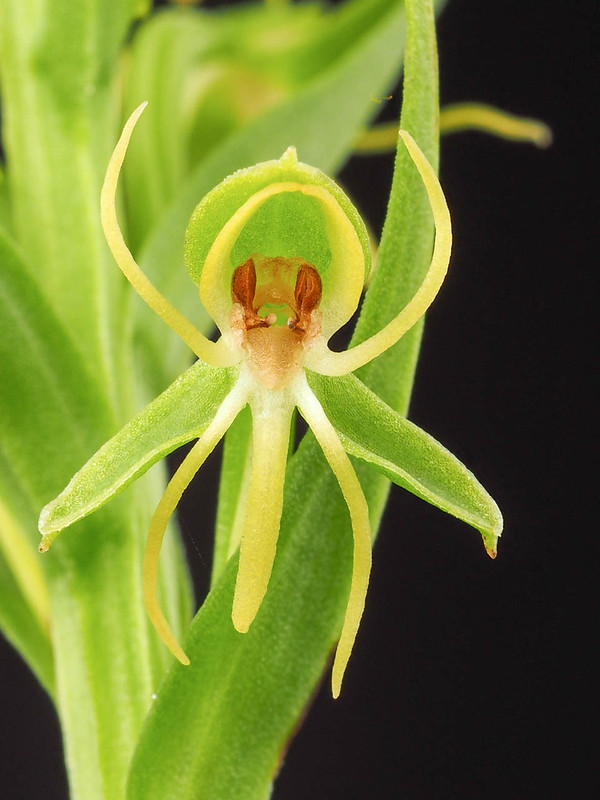 |
| Older flower (near the bottom of the inflorescence) with the darker pollinia |
 |
| Younger flower (near the top of the inflorescence). The pollinia doesn't seems to be exposed, so the "eyes" look paler. |
I got my plant from Lee's Botanical Gardens, operated by Bruce Lee Bednar. He used to have a web page, but it got taken over by a cracker. You can still contact him via Facebook. He is primarily a carnivorous plant grower, but he has quite a few interesting Florida orchids for sale.
This species is easy to grow. Unlike other epiphytic orchids, you want to keep it moist. Some people grow it in a tray of water, just like Sarracenia spp. But I use water retentive media (Peat Moss:Medium Perlite=1:1) and a large pot (6" square), and water frequently to keep it moist. It likes warm condition, and I keep it at 29C (85F) max and 18C (65F) min temperature. I use fairly strong light like how you grow typical Cattleya.
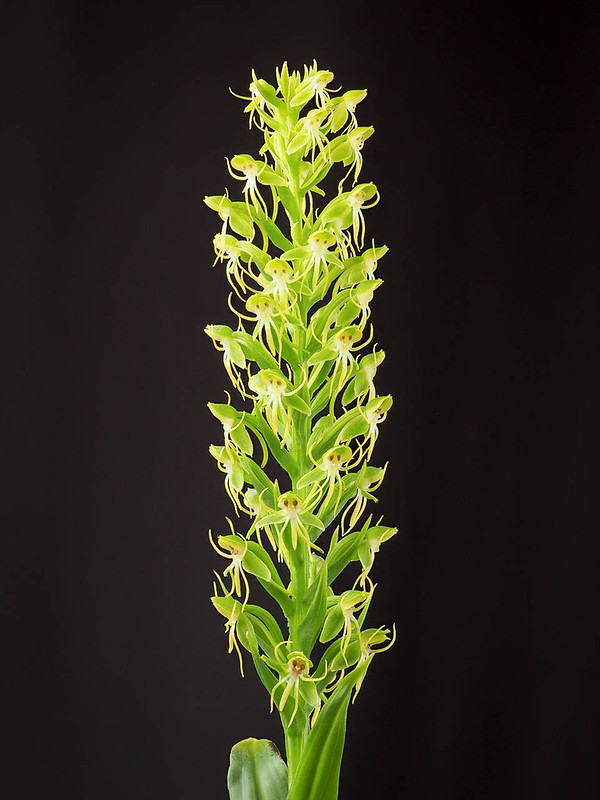
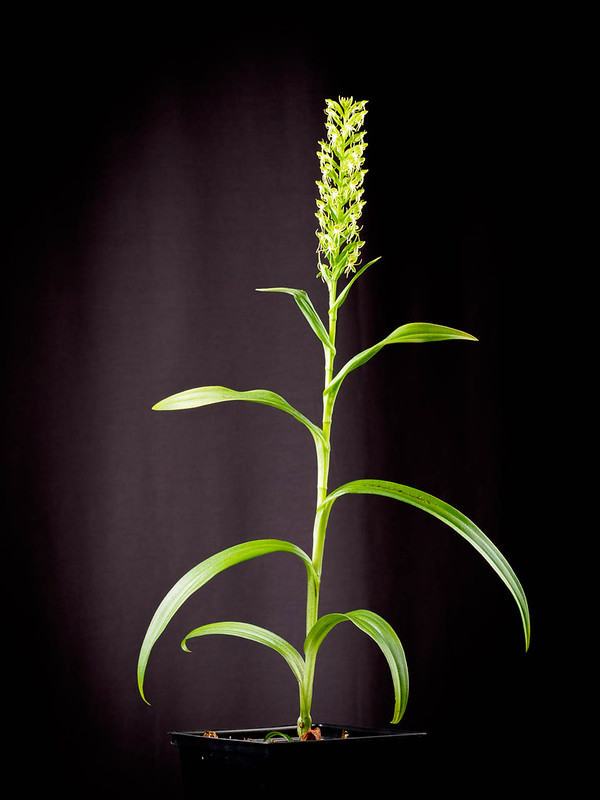
Literature cited:
- Hunt, K.W., 1943. Floating mats on a southeastern coastal plain reservoir. Bulletin of the Torrey Botanical Club, pp.481-488.
- Johnson, M.K., Alexander, K.E., Lindquist, N. and Loo, G., 1999. A phenolic antioxidant from the freshwater orchid, Habenaria repens. Comparative Biochemistry and Physiology Part C: Pharmacology, Toxicology and Endocrinology, 122(2), pp.211-214. (link to abstract)
- Wilson, D.M., Fenical, W., Hay, M., Lindquist, N. and Bolser, R., 1999. Habenariol, a freshwater feeding deterrent from the aquatic orchid Habenaria repens (Orchidaceae). Phytochemistry, 50(8), pp.1333-1336. (PDF on Research Gate)
Comments
Post a Comment